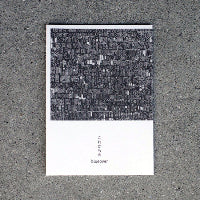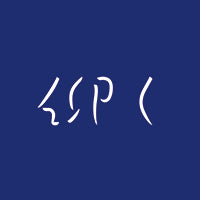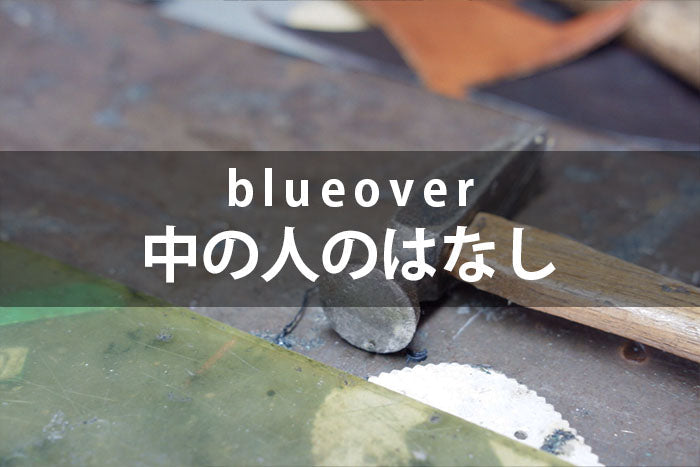blueover's story #04 About the sole
 |
ZUCCO Blueover's sample craftsman. He creates shoes by hand, from making patterns to sewing and shoemaking. He also arranges for factories and materials. @blueover_zucco |
This series is a compilation of several posts I wrote on Note in an attempt to explain my work - that is, making shoes - in as easy-to-understand a way as possible.
About insoles
What is Sole?
Sole is the general term for the bottom of a shoe.
The sole is divided into three main parts .
- insole
- Midsole
- Outsole
These are all words that come up frequently at our Blueover, so I hope to have the opportunity to explain each one.
And today, insoles.
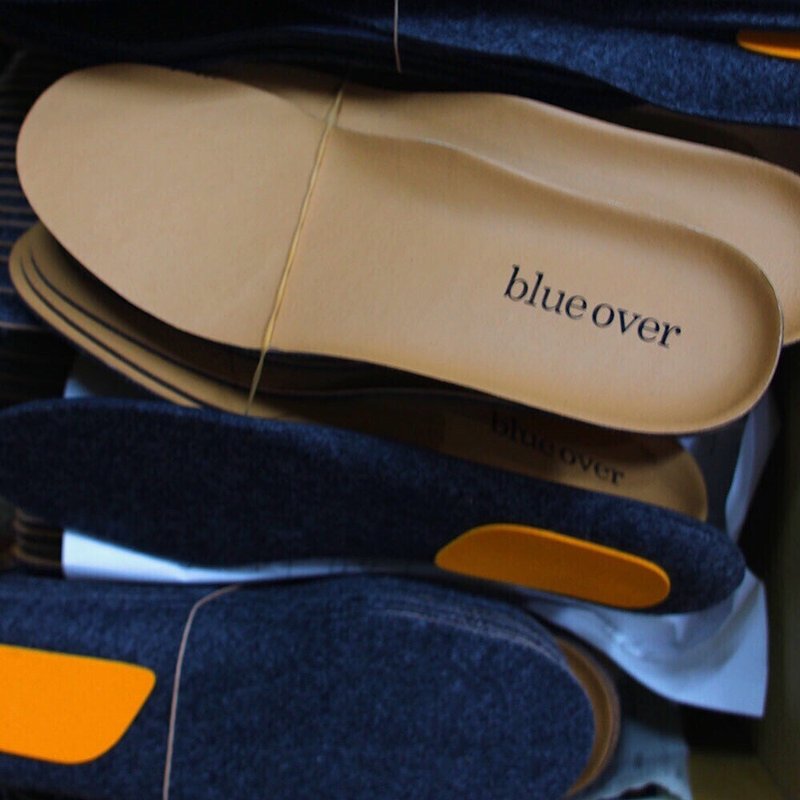
insole
You may be familiar with the term insole . It comes into direct contact with your feet inside the shoe, and acts as a cushion to protect your feet from shocks when walking, improve the fit of the shoe, and support your feet.
Our insoles
At blueover, we mainly use two types of insoles.
The first is a cup insole made of leather, the same material as the lining, with felt fabric attached and some urethane foam. This is used in the Marco and PHOLUS models.

The second is a flat insole made of canvas fabric with the brand name printed on it and memory foam urethane attached to the back.
It's printed with "blueover, blueover, blueover, blueover" all over it. It's used on Mikey, Bob, and some SHORTY TRs.
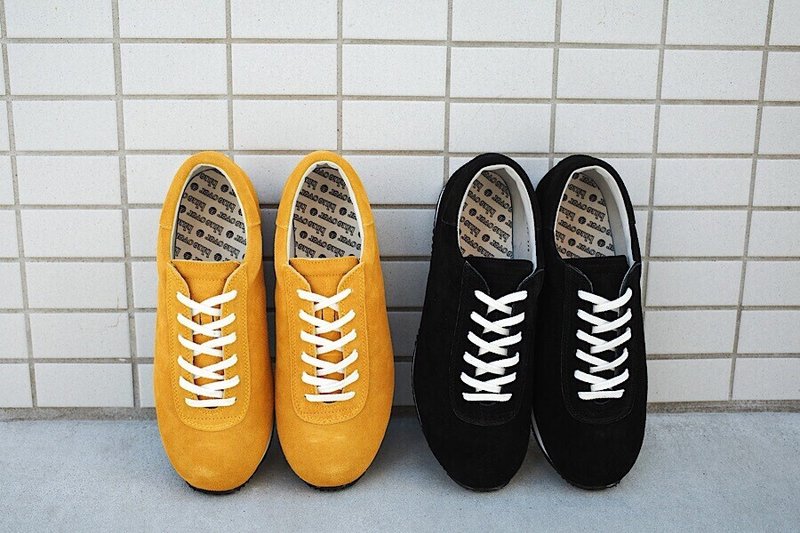
We ask a domestic insole manufacturer to create the insoles for us.
Afterword
No matter what shoes you're wearing, if the insole is too cushioned it can make them feel uncomfortable to wear. Be sure to keep this in mind when getting fitted. *When trying on shoes, make sure to wear both feet and walk around the store!
It is recommended to choose a material that has good moisture absorption properties to absorb sweat from your feet.

Also, if you wear your shoes for a long time, the insoles may wear out and you may want to replace them. You can purchase them at 100 yen shops or Tokyu Hands, but if you talk to the shoe brand, you may be able to purchase new official insoles from the brand. (They should cost around 1,000 to 2,000 yen.)
Midsoles (Part 1: From a Sneaker Perspective)
Today I will be talking about midsoles. Since this will be a long post, I will write about it in two parts.
What is a midsole?
It is located on the inside of the outsole, in the middle between the upper and the outsole. Although the name suggests, it gives a slightly different impression when worn on sneakers and leather shoes.
A look at the midsole from sneakers
When walking, the midsole absorbs the shock that hits your feet, reducing the burden on your feet. Cushioning, rebound, lightness, and durability are key for the midsole of sneakers.
The white part of the sole in the photo below is the midsole.

The history of sneaker midsoles
In sneakers, the midsole runs from the toe to the heel, giving a different impression than the midsole of regular leather shoes.
This specification was developed in the late 1960s and 1970s, and this was followed by the development and evolution of the highly cushioned, lightweight EVA (ethylene vinyl acetate).
Since then, development of cushioning materials other than EVA has progressed, and a revolution has begun in sports shoes.
What is EVA?
At blueover, we use EVA .
It is more flexible and resilient than polyethylene. It is also less susceptible to deterioration than urethane. (Note: Urethane may deteriorate over time due to humidity, but it can last longer if handled and stored with care.)
If you open a pair of shoes that you've put away in a shoebox for years, you might find that the soles are worn out or sticky. This is called hydrolysis. EVA does not undergo hydrolysis.
It is a material that does not harden easily even in cold places, has excellent durability, and does not deteriorate even when exposed to wind, rain, or UV rays. It also has a low specific gravity and is very light compared to polyvinyl chloride and rubber.
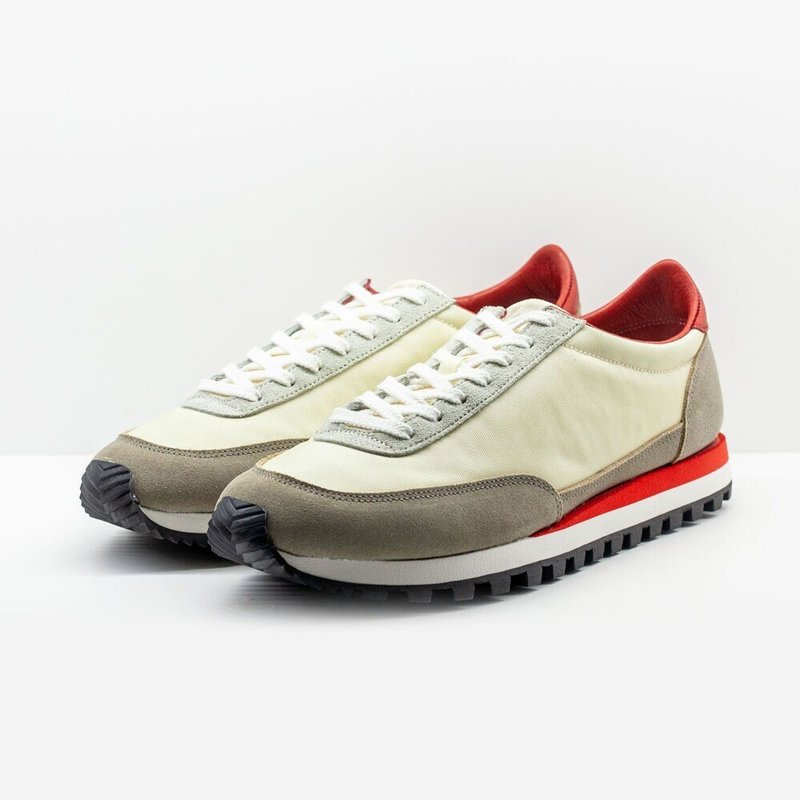
The SHORTY TR from a season ago featured layered colored EVA in the EVA section, allowing for color play.
blueover EVA
The hardness can be adjusted by varying the EVA blend. At blueover, we design our shoes to be just the right hardness for everyday wear around town. They may feel a little stiffer than running shoes.
To prevent fatigue when walking for long periods of time, the shoes are made slightly harder and more resilient than running shoes.
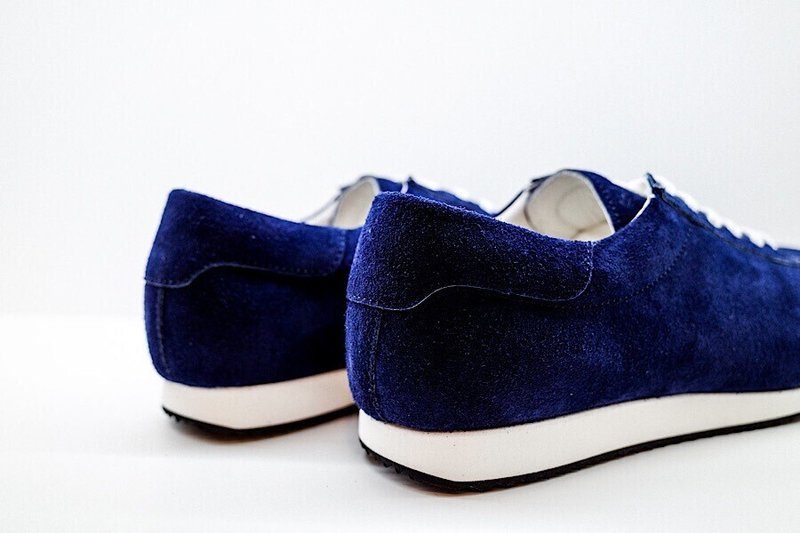
A domestic sole processing company cuts the EVA sheets and outsole sheets one by one, glues them together, and carves them out. It's a very time-consuming process. Our shoes are made with the support of many people.
Midsoles (Part 2: From a Leather Shoe Perspective)
Yesterday, I talked about the first part of the midsole. From a sneaker perspective, it sits on top of the outsole. Today, I'd like to talk about it from the perspective of leather shoes.
Leather shoe-style midsole
It may be misleading to say that we are talking about leather shoes. The midsole that I would like to explain here is closely related to the stitching on the bottom of the shoe .
Shoe sole sewing
There are many methods for attaching shoe soles. Many Japanese brands use a method called the cemented method. The top part of the shoe, called the upper, is pressed and attached to the outsole with adhesive. (More details will be covered in another article.) This is a method in which the sole is not sewn .
Other methods, such as the Goodyear method and the McKay method, involve attaching the upper and outsole together and then sewing the sole. Shoes with leather soles are often sewn together, which helps prevent the sole from peeling off and also makes the shoe look cooler.
Second sole/triple sole
Some shoes have a layer of leather or rubber sandwiched between the upper and outsole to add thickness to the entire sole. Trickers shoes are made using the Goodyear method, with the midsole sandwiched between a thin piece of leather called the welt that wraps around the upper and a rugged outsole , and then the three layers are sewn together.
The result is shoes with a heavy feel and presence.

Before joining blueover, when I was working independently, I only made shoes with leather soles. At that time, I used a method called Black Lapito to sew the soles. After the McKay stitching, I sewed the soles out, and at that time, a midsole was essential.

The photo shows the shoes from that time. I like how the midsole adds volume to the bottom. It also increases the durability and water resistance of the leather sole.
However, compared to a single sole with only one layer attached, the entire bottom feels harder. The rebound is less than that of a single sole, so a single sole is better in terms of comfort.
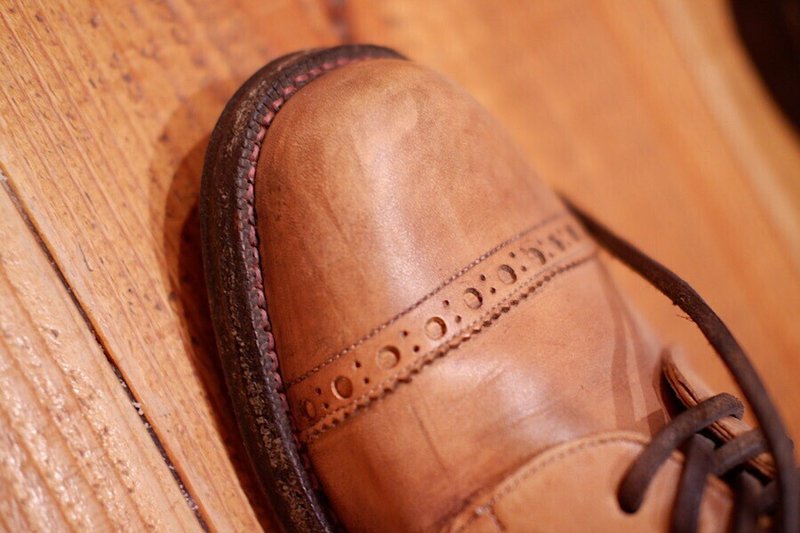
The topstitching is done by stitching the bottom all the way around the upper as shown in the photo above.
Midsole commonly found in boots
This is often seen in work boots, but in some cases the midsole is glued together, sewn to the bottom, and then a rubber outsole is glued on. In the photo below, the welt and midsole are sewn together in two layers, and the outsole is glued on.
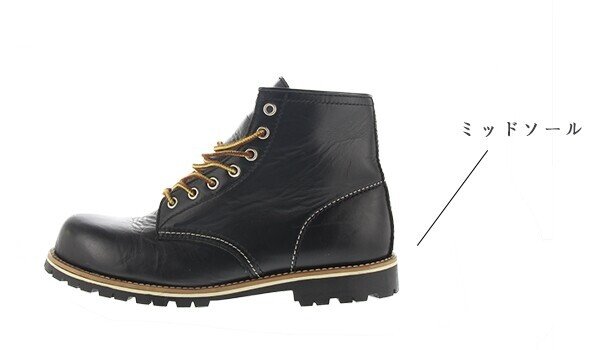
blueover midsole
blueover offers two models, marco and PHOLUS, which use the McKay and Goodyear methods.
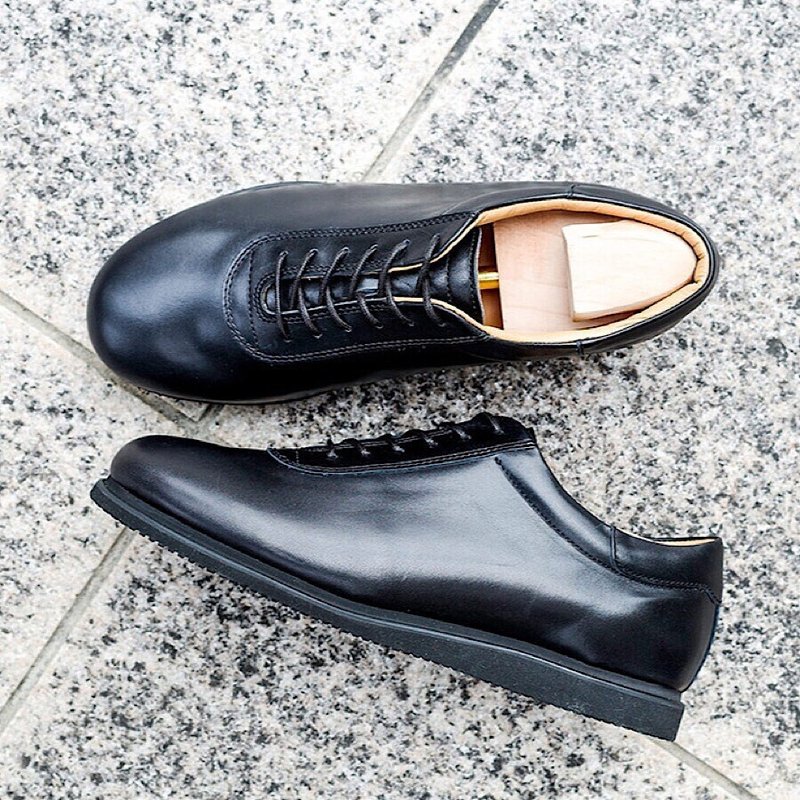
Marco sews the midsole to the bottom using the McKay method, and then glues the outsole on.

PHOLUS is made with the Goodyear method, with overstitching and topstitching followed by the glued outsole. Both midsoles are sewn to the bottom, while the outsoles are not sewn but are glued together.
The reason we used a midsole and stitched bottom, even though it's a sneaker, is that when the outsole wears down, the sole can be replaced without affecting the upper. The midsole allows you to replace the sole without touching the upper.
We have adopted this method with the aim of ensuring that you can enjoy using it for a long time.
Afterword
We've talked about midsoles in two articles. I know it was a little difficult to understand, but I hope you were able to understand.
In summary, at blueover, we use both EVA midsoles for sneakers and stitched midsoles for leather shoes.
We would like to continue to utilize the benefits of both past and current technologies in our quest to make even better shoes.
Until the outsole is made
There are two main types of outsoles:
There are various materials, but there are mainly two types of outsoles used in mass production.
- molded bottom
- Processed bottom
The exception would be custom-made shoes, where the sole material is cut out separately and processed at the same time as the sole is attached, so neither of the above methods can be used.
What is a molded sole?
Molded soles are made by pouring material (rubber, urethane, EVA, etc.) into a mold in the shape of the outsole, then baking and expanding it. Molds are often prepared for each design and size, and initial costs are high, but production efficiency is high and large quantities can be produced in a short amount of time. The soles of boots and vulcanized shoes are also types of molded soles.
Although it's not blueover, the women's shoe brand I founded, AROA, uses the same molded urethane soles used in nurse shoes. When I order the soles from the factory, they compare them with the processed soles and the finished product is ready in no time. There are no problems with cushioning either.
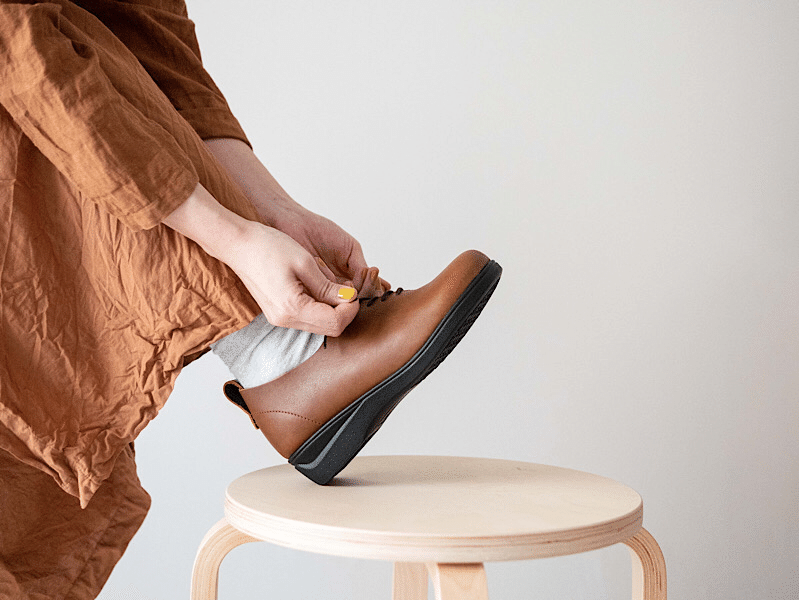
They are often made from a single material. (Some shoes are made by gluing together several parts made from molded soles. This reminds me of the Reebok Pump Fury. It seems to be made from about three different materials and several parts glued together.)
Vibram's famous sole unit #1136 is also a molded sole (although the material is a proprietary blend of the brand called VibramTront).
What is a processed bottom?
The outsole used by blueover is a processed sole.
※Note※
The outsole here refers to the unit that the sole factory recognizes as the sole material. The EVA part of a sneaker sole is sometimes called the midsole, and the rubber is sometimes called the outsole. I have previously explained the midsole and outsole separately.
There are many different types of processed soles. Creating leather sole units is also a type of processed sole.
This time, we will introduce the process of how our processed soles are made with photos.
① Create a cutting mold for each type and size of sole design and cut the EVA sheet and rubber sheet. Cut in the same direction to ensure the rubber pattern is the same, while also considering ease of handling.
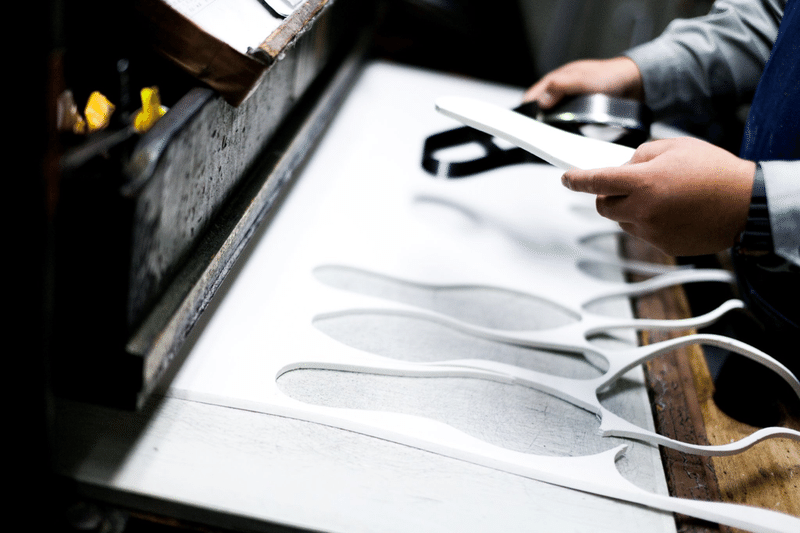
② After conducting an adhesion test, the EVA and rubber cut in ① are glued together. If there is a wedge (heel), the EVA sheet is sloped or two sheets are overlapped so that the heel is higher and the front is thinner.
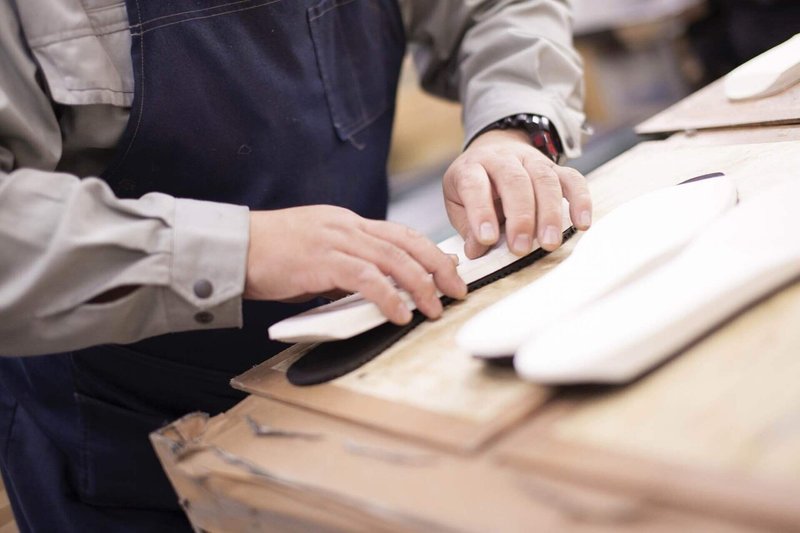
3) To match the gauge of the outsole, the excess is removed with a buff, the sides are smoothed, and the angle (flare angle) is set. This is a lot of manual work, and the craftsman's skill shines through. Because each step is so time-consuming, the delivery time is long.
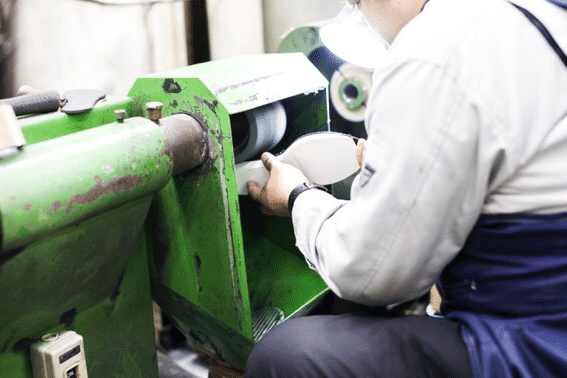
Afterword
Whether it's a molded or processed outsole, the outsole is designed with extreme precision . If it's even a millimeter too big, it will affect the fit when the sole is attached to the shoe. And of course, it will affect the finished product.
Therefore, when making a sole sample, detailed discussions are necessary not only with the sole processing company but also with the sole attachment factory. Each sole attachment factory has its own quirks, so we consult directly with the factory that we are asking to mass-produce. We make samples many times, attach the sole, make more samples, attach the sole, and repeat this process.
It will eventually be incorporated into the new model.
Well, what do you think? I'm currently searching for a new outsole. The first sample finally arrived about four days ago, and although there are still some adjustments to be made, it looks like it will be very good.
We will continue to work on this so that we can meet you in the spring, so please look forward to it.

